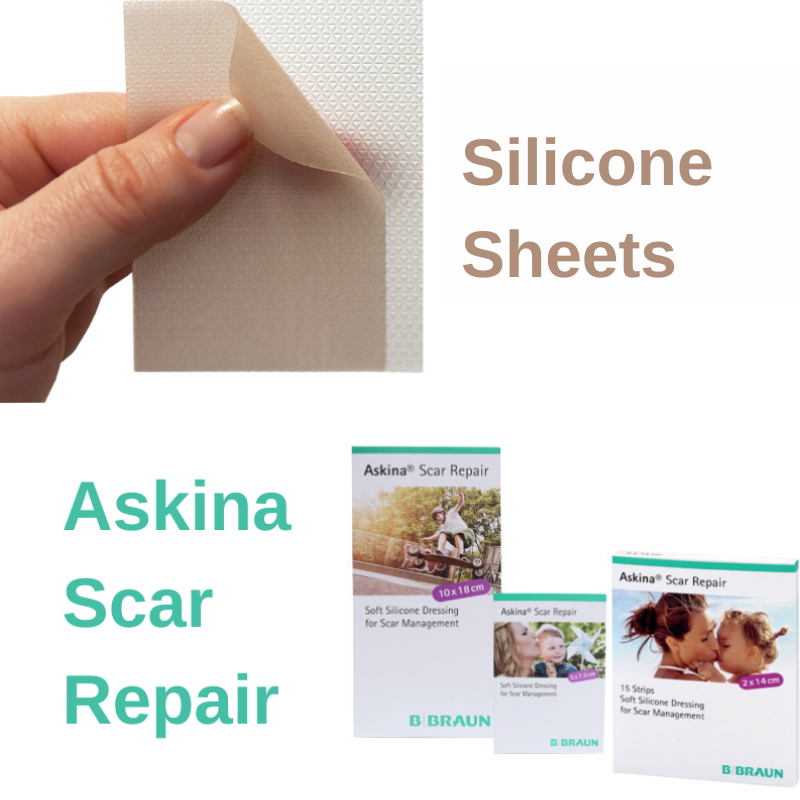It's understandable to want to minimize the scars from stitches, especially if they cover a large area of skin. There are steps and ways you can incorporate into your routine to have a scar-free healing. A scar is the natural healing process of the skin and can form for many different reasons such as the result of surgical procedures. You can minimize and prevent stitch marks by incorporating the following actions into your daily routine.
How Does a Scar Form on the Skin?
Scars form after a wound has completely healed, when the dermis (deep, thick layer of skin) is damaged. The body forms new collagen fibers (a natural protein in the body) to repair the damage, resulting in a scar. The new scar tissue will have a different texture and quality. Scars are mainly divided into atrophic, hypertrophic and keloid.
Stitches can become hypertrophic or keloid, forming scars over time. This depends on the type of skin, age, where the wound is on the body, etc.
How to Take Care of Your Stitches So They Don't Leave Marks
Keep the Stitched Area Clean
It is important to keep the wound area clean. A possible infection can delay the healing process and increase the chance of scarring and thus permanent suture marks.
Avoid Activities That May Strain Your Stitches
In the first few weeks, it is best not to lift weights or do hard physical exercises as these may affect the wound and the stitches, leaving scars. At first, avoid doing heavy work at home.
Massage Techniques for Scar Healing

Introduce gentle scar massage techniques to improve blood circulation and promote tissue healing. Apply massage techniques only after the healing time has been completed and the stitches have been removed. You can try massaging with some oil that contains vitamin E and helps regenerate the skin. Massage stimulates blood circulation, regenerates tissue and reduces the chance of scarring from stitches.
Silicone for Reducing Stitch Marks
If you are prone to keloid or hypertrophic scars, silicone has been shown to be effective in preventing scarring. According to the National Library of Medicine, silicone pads are effective because they provide the mechanical pressure of an adhesive on the skin and silicone which greatly helps reduce pigmentation. and the height of the scars.
However, it is important that they are used regularly for the first 2-3 months as they are most effective in preventing suture marks up to the first year of scarring. Silicone is the recommended first-line treatment for scar management among healthcare professionals, according to previous review.
Try B Braun Askina Scar Repair Silicone Sheets! Choose the dimensions that suit you and apply the silicone sheet over the healed postoperative scar.
- Significant reduction in scar formation and suture marks.
- Protection from the sun's ultraviolet radiation.
- Aesthetic effect.
- They can be cut to the dimensions you want.

Sun protection
The sun and solar radiation can intensify the scars from stitches over time. Wounds, because they contain newly formed cells, will burn faster with sun exposure than other areas of your body. To avoid burning or hyperpigmentation in these areas, you should use a sunscreen with at least 30 SPF UVA and UVB protection.
Acupressure
Acupressure is generally considered unclear in how much it helps in managing healing for suture scars as its effectiveness is multifactorial. However, according to research findings, pressure therapy is able to improve the color, thickness, pain and quality of the scar in general.
Important note : Pressure therapy is effective when started before 2 months after the injury and using a minimum pressure of 20-25 mmHg. Also, the duration of treatment should be at least 12 months and preferably up to 18-24 months.
Healing of scars and stitch marks is usually achieved with plastic surgery. However, silicone, massage and acupressure have proven to be effective methods in reducing and eliminating suture marks. A key requirement is to take care of your stitches on a daily basis and protect them from sun exposure to avoid scarring.
Find Silicone Sheets for elimination of hypertrophic scars and keloids at Traumacare!


